I have built a battery pack using some old (but working) 18650 cells I had.
The 4S4P battery pack diagram follows:
 I tried to balance charge it with my IMAX B6AC v2 (4S, TVC = 4.2V, i=2.5A, w/ balance connector).
I tried to balance charge it with my IMAX B6AC v2 (4S, TVC = 4.2V, i=2.5A, w/ balance connector).
It fails to charge parallel #3 and parallel #4 cells. While parallel #1 and #2 reach 4.2 V during CC charging, parallel #3 and #4 stay < 4.1 V and they heat up a lot while the others sit at 4.2 V.
I am wondering if this is some kind of limitation of the current bypass method the IMAX uses to balance charge batteries:

Full schematic: https://www.rcgroups.com/forums/showthread.php?1362933-IMAX-B6-Schematic
As far as I understand, it would try to bypass the parallel #1 and parallel #2 cells to charge only cells at lower voltage (parallel #3 and #4).
I ran a quick simulation to see how effective the current bypass would be:
 It seems to be quite limited due to the 20 Ohms in series with the transistor, being much higher than the internal resistance of the Li-ion cell.
It seems to be quite limited due to the 20 Ohms in series with the transistor, being much higher than the internal resistance of the Li-ion cell.
Questions:
- I fail to understand how it would heat the cells (parallel #3 and #4) close to 50 C.
Any ideas on that? Overcurrent even if the IMAX shows ~1.5 A? - Is there a way to correct that besides charging each parallel row separately?
I have already tested that, and if I charge parallel #4 as an 1S4P, it goes to 4.2V fully charged without a problem.
Maybe an external balancing IC would be more effective?